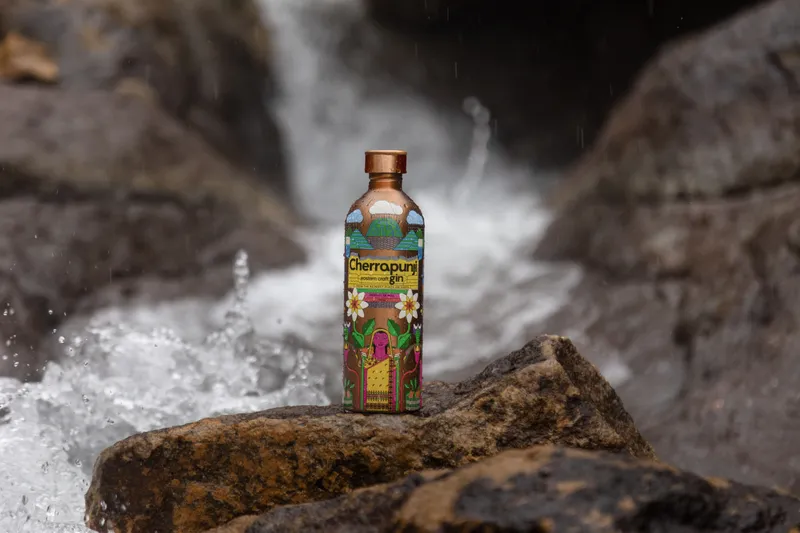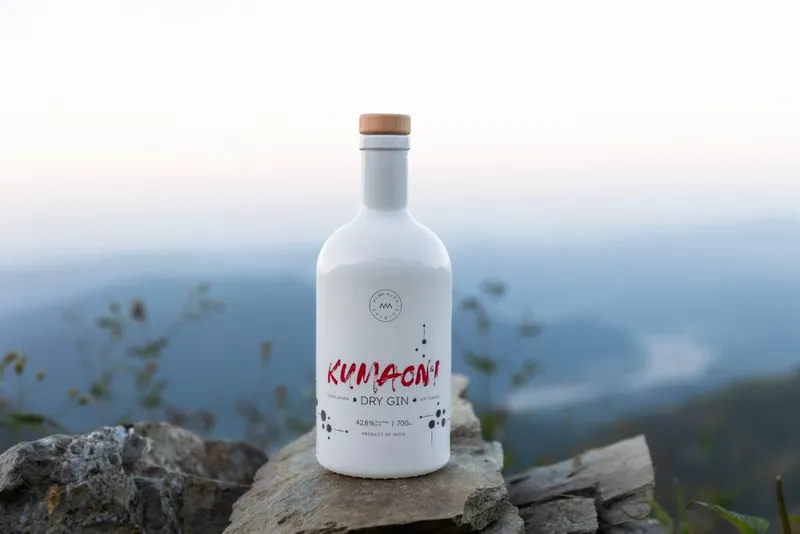International Gin and Tonic Day: A tale of two distinctly Indian gins
This International Gin and Tonic Day, take a swig of these two gins with truly Indian origin stories—one from the rainiest place on earth and the other from the foothills of Uttarakhand.
While there are many stories behind the origin of International Gin & Tonic Day, perhaps the most observed is of Mary Edith Keyburn—who passed away in 2010 at the age of 95.
As the urban legend goes, Keyburn asked her family members to smuggle her a glass of gin and tonic. To commemorate her life, Keyburn’s family created a Facebook event and urged anyone, anywhere to raise a glass of her favourite tipple in her honour—thus giving birth to a worldwide celebration.
While all of us may not share the same love for the classic cocktail, it is undeniable that gin has left its mark on Indian drinkers in recent years. The category is predicted to reach nearly $1.5 billion in value by 2030 in India alone.
The excitement around gin is largely driven by young drinkers, stirring up somewhat of ginaissance in the country. There are now several players vying for the market’s attention, making it one of the most exciting alcohol categories in recent times.
This International Gin and Tonic Day, here are two particularly unique brands that have interesting spirits on offer.
Cherrapunji Gin
For Mayukh Hazarika, the sight of rain wasn’t always pleasant growing up in Meghalaya. He recalls going to school often meant wearing slippers and carrying shoes in his backpack to prevent them from getting wet.
“Now that I look back, the very thing that I disliked the most is what I’m putting into bottles and making into a gin,” he tells YS Life.
Through his venture Cherrapunji Gin, Hazarika wants to offer the rest of the country a slice of Northeast India. It all begins with harvesting rainwater from a small village, Mawsynram, known to receive the highest amount of rainfall in the world.
The rainwater is used in bottling spirit. While spirits are traditionally bottled with demineralised water, to Hazarika, it made sense to use rainwater.
“We had a free source of water which, by nature, is demineralised,” he explains, adding, “In this way, you are also creating something special because you really are getting a piece of Cherrapunji with every bottle.”

A bottle of rain, Cherrapunji Gin- Source: Cherrapunji Gin
To make the water usable, Hazarika had to source Australian water tanks with customised filters. However, for any gin, it all boils down to the botanicals.
In Cherrapunji Gin, there are a number of unique ingredients that pay homage to the bounty of the region where it originates. Starting with the GI-tagged Sohra oranges and fresh peppers from Meghalaya, to the smoked tea leaves from Lushai Hills, the ingredients come together to tell a unique story about the Northeast as a whole.
As for the bottle’s packaging, after several rounds of experimentation with glass and paper, Hazarika eventually decided to use stainless steel to create a bottle that drinkers could use long after the spirit had been consumed.
That being said, Hazarika acknowledges that making a craft gin does come with certain limitations.
“For instance, some of the ingredients we use will only grow at certain times of the year … Because we use so many of those types of ingredients, we want to stay true to the essence of craft, especially for this brand,” he explains. For now, much of the focus is on executing the rollout plan.
Priced at approximately Rs 2,500 a bottle, it is currently available in Meghalaya and Assam, with plans to soon roll out in major cities.
Kumaon & I Gin
Ansh Khanna and Samarth Prasad were family friends long before they became co-founders. The two shared a mutual interest in the beverages and hospitality space—Khanna having studied wines and worked in vineyards abroad, and Prasad ran a chain of stays in Uttarakhand where he spent his formative years.
Over a lunch meeting, the two seemingly decided they wanted to explore something together.
“Our first and foremost goal when we started this project was that we didn’t really set out to produce a beverage category from the market point of view, but our idea was to showcase the region in any way we could,” says Khanna, Co-founder of Himmaleh Spirits.

Kumaon and I Gin bottle- Source- Himmaleh Spirits
To achieve this, the two developed a farm-to-bottle distillation process—one that involves the use of over 11 botanicals that are native to the region. The bottling process also involves the use of Himalayan natural spring water, as opposed to demineralised water—giving it a distinct profile and flavour.
Among the botanicals that stand out is the Timur berry, Ansh explains. “It is a type of pepper … a berry that is unique to that particular region. It is commonly used to make chutneys or used in dishes … I don’t think it has ever been used in a gin before,” he says.
Prasad also points out the use of kali haldi—a form of turmeric that is grown 10,000 feet above sea level. Khanna and Prasad set out to make out a provincial gin, which, according to them, is a spirit that represents the region in its totality.
But of course, this wasn’t without its challenges.
“We definitely had a lot of options [when it came to picking a lot of botanicals],” says Prasad. “After a lot of trying and testing, we were able to come up with the best botanicals which actually represent the liquid and the region in its best form.”
What the duo landed upon was a conscious mix of the best Himalayan ingredients. They amalgamated a strain of juniper unique to the region that lends the spirit an earthy after-taste, coriander seeds, and two distinct citrus fruits—Galgal, a local citrus variety, and Kinu, which introduces nuanced sweet undertones.
However, the biggest achievement was traceability.
“With this Kumaon & I Gin, we are able to trace back botanicals to the farmers, so we know exactly where the botanical comes from,” adds Prasad.
“We had to understand the botanicals on a fundamental level along with hundreds of trials to make sure they work in the gin-making process,” says Khanna.
Khanna and Prasad invite drinkers to visit their facilities and the distillery to learn more and engage with their product. However, if they aren’t able to make a journey to the location, their spirit is a good alternative. The bottle—decked with folk art from the region—is a good slice of Uttarakhand, says Prasad.
The spirit is currently available in Uttarakhand, Goa, and Gurugram, at Rs 2,700, Rs 2,896, and Rs 3,000, respectively.
(This story has been updated to correct some factual errors.)
Edited by Kanishk Singh







